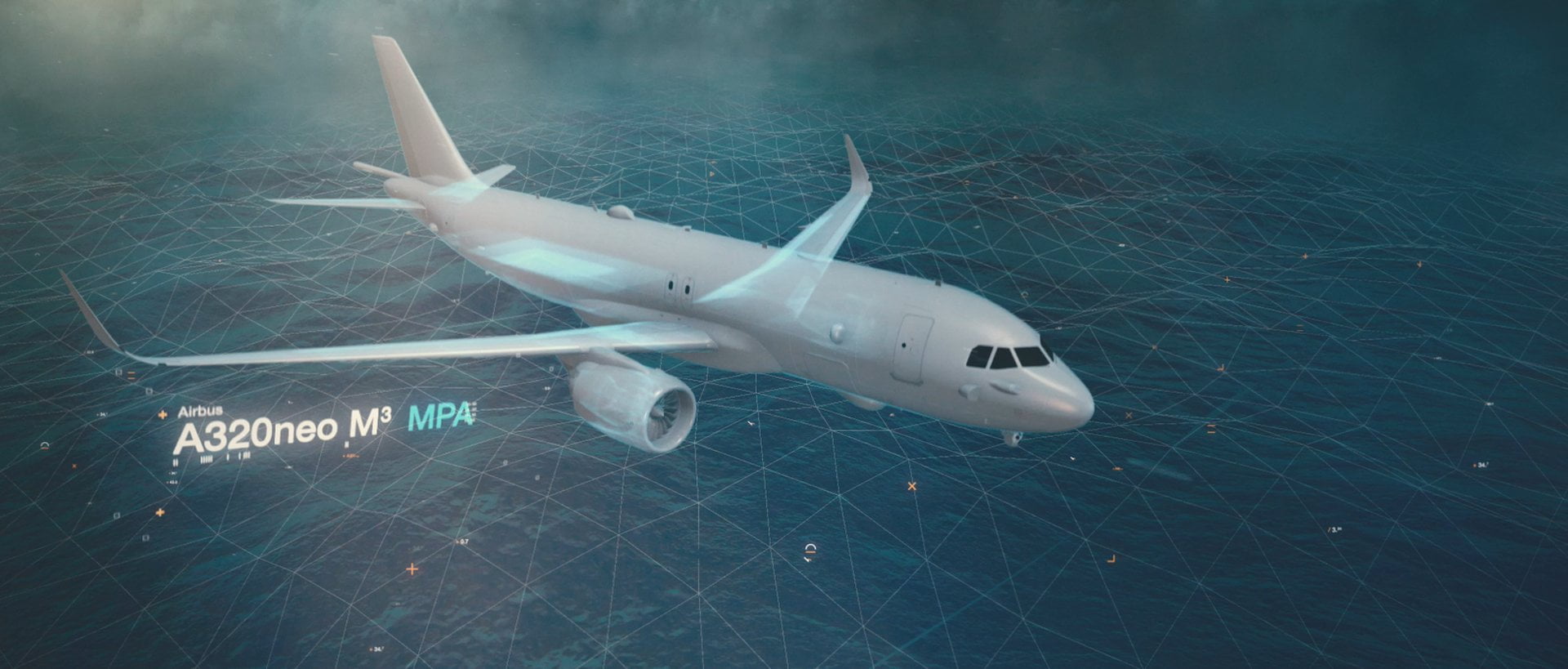Airbus Defence and Space is shaping a template for integrated air operations, which they call the Future Combat Air Systems.
Within this template, each key air combat platform is being reshaped or designed from the ground up to provide a contribution to integrated air operations.
A platform which makes sense both from its role in the commercial portfolio as well as for the demand side for military forces, namely, the A320 neo.
The A320 platform is widely operated worldwide and provides a solid platform from which to build a multi-mission ISR or C2 aircraft for missions such as those associated with maritime patrol aircraft.
If Airbus designed this aircraft from the ground up with considerations for new technologies with regard to upgradeability and interoperability, they have a chance to shape a new offerring for a 21st century air force.
In the IISS wrap up of the Farnbourgh Air Show in their Defence Analysis Briefing, the emergence of an A320 neo multi-mission platform was discussed.
“Airbus is looking to improve its offering too, saying that the A320 neo was being considered for new applications and that the “A320 M” A — would be designed to fulfill a range of ISR roles, particularly maritime patrol and anti-submarine warfare.”
Clearly, Germany and France could provide a launch customer and the Canadians are clearly looking as well towards a CP-140 and could well become part of a launch customer base.
Notably, with Airbus relationship on the C series, a broader relationship between Airbus and Canada is clearly possible.
Airbus Defence and Space has described their approach as follows with the title “Airbus evaluates an A320neo multi-mission version:”
The best-selling jetliner is considered for a wide range of ISR and transport operations
Having made its mark in the commercial airline sector, the A320neo is now being considered by Airbus for new applications: as a highly-capable and cost-effective platform for ISR (intelligence, surveillance and reconnaissance) duties and as a military transport.
The variant – designated A320M3A – would be designed to fulfill a range of ISR roles, particularly maritime patrol and anti-submarine warfare. It also can be outfitted with modular roll-on/roll-off payloads for airlift missions ranging from carrying passengers, troops and VIPs to medical evacuation (medevac) and transporting cargo.
Airbus’ consideration of the A320M3A is in response to market demand, spurred by the growing use of more capable ISR systems – which require physically larger host platforms with increased electrical power and more efficient cooling systems than previously were the case for C4ISR aircraft.
A proven, low-risk solution
One of the biggest applications of the A320M3A is for maritime patrol and anti-submarine warfare, with countries in Europe and elsewhere seeking replacements for ageing aircraft – many of which will be encouraged to develop fleet commonality driven by the intensive growth of joint operations with member nations of NATO (North Atlantic Treaty Organization).
Advantages in offering the new engine option (NEO) version of Airbus’ A320 commercial jetliner include an extensive capability for growth in a fuselage cross-section that is wider than its competitor in the same size category, the long range and endurance, as well as the lowest operational and life-cycle costs in its class. Other pluses for the A320M3A are the aircraft’s high reliability (proven in airline service), and the resources of an established worldwide supply chain and training network.
The A320M3A also benefits from being a low-risk solution: being based on Airbus’ highly-mature A320 airliner family in high-rate production; and building on the company’s proven capabilities in producing military derivatives of its commercial aircraft – such as the A330 Multi-Role Tanker Transport (MRTT), which is in use by military services around the globe.


